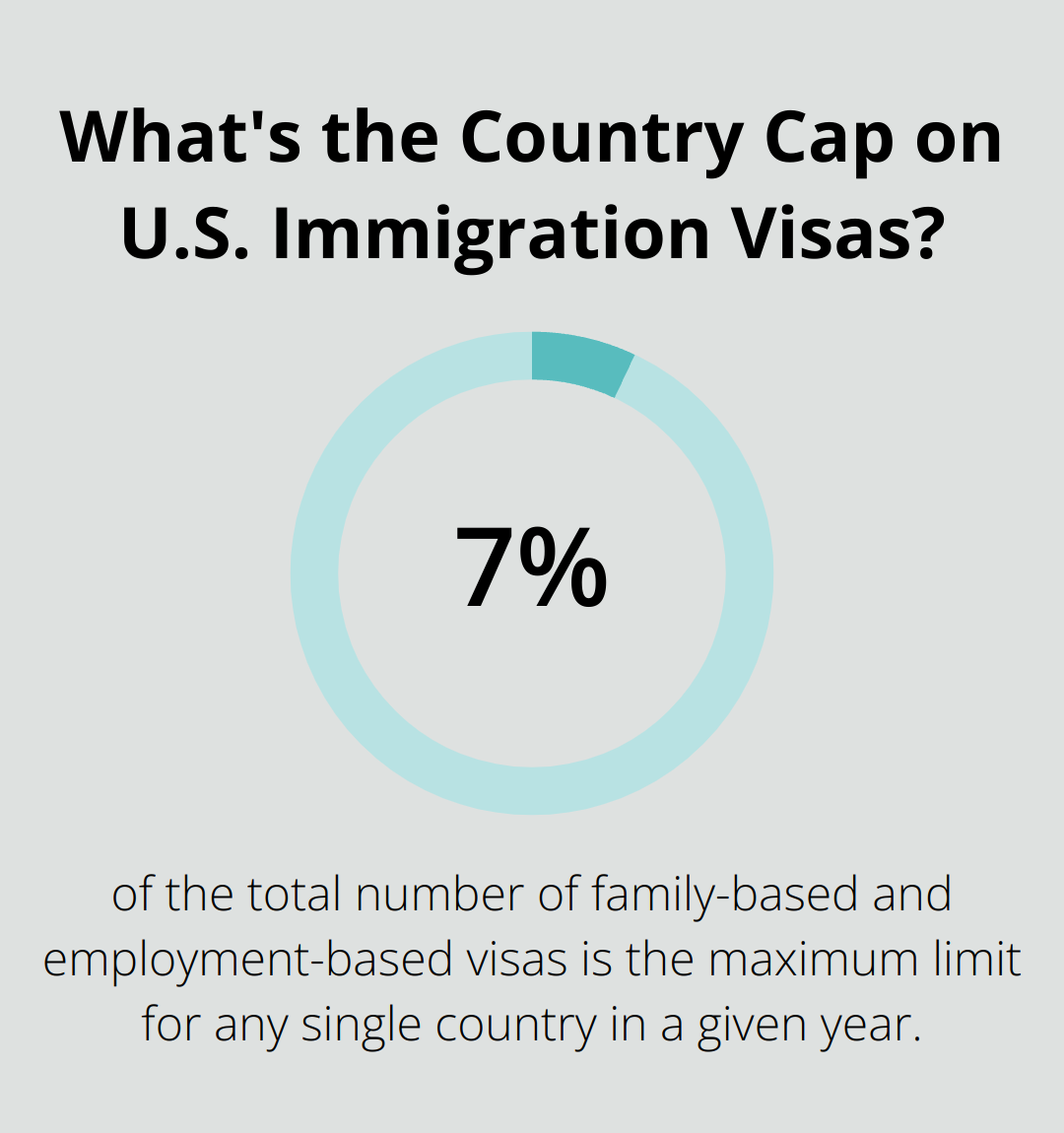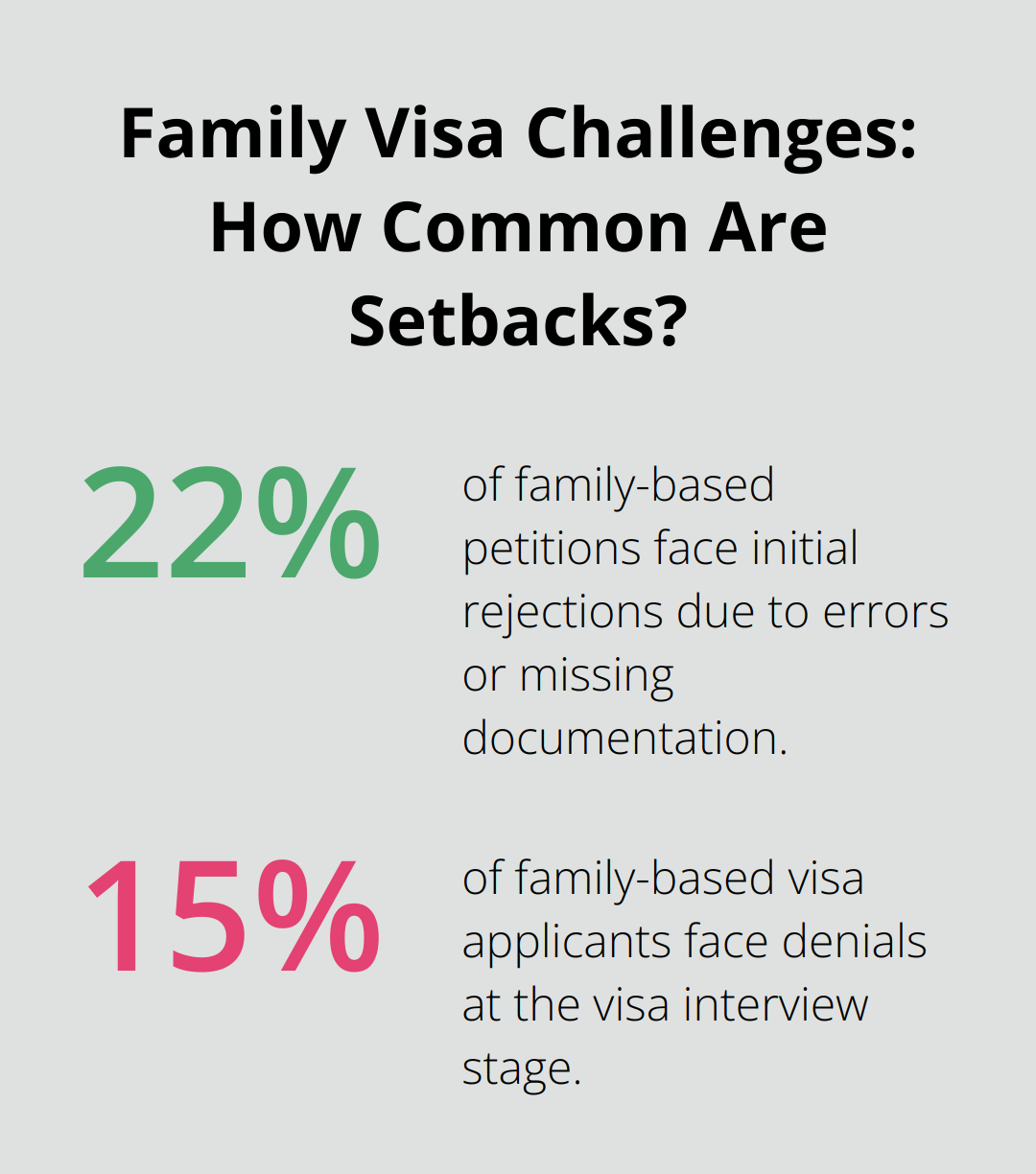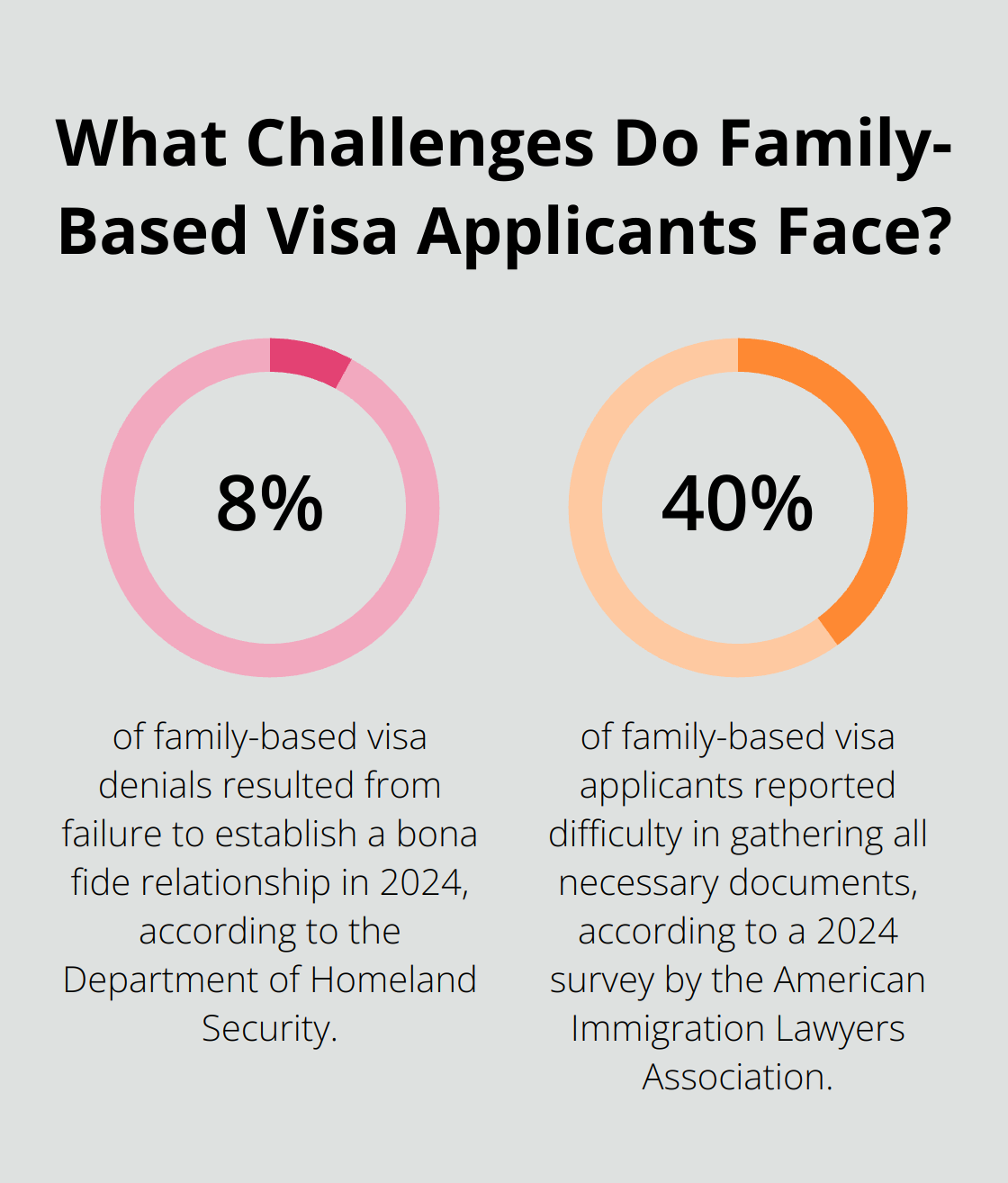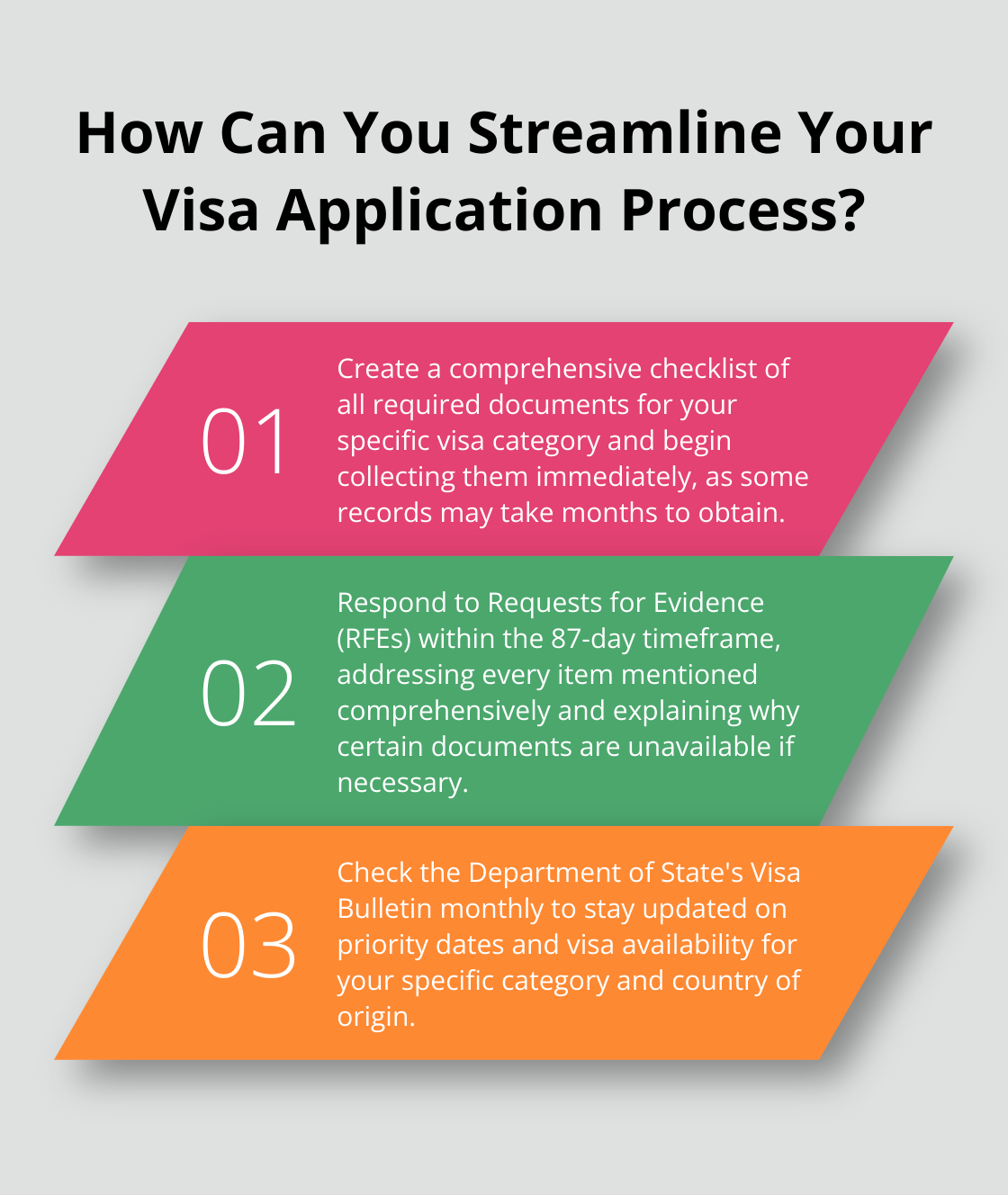
US Family Immigration Process: A Comprehensive Guide
The US family immigration process can be complex and overwhelming for many families seeking to reunite in the United States. With various visa categories, eligibility requirements, and potential roadblocks, it’s essential to have a clear understanding of the steps involved.
At Law Offices of Jeffrey A. Thompson, we’ve guided countless families through this intricate journey. In this comprehensive guide, we’ll break down the key aspects of family-based immigration, providing you with valuable insights and practical tips to navigate the process successfully.
Family-Based Immigration Explained
Types of Family-Based Visas
The U.S. immigration system offers two main categories of family-based visas: Immediate Relative visas and Family Preference visas. Immediate Relative visas apply to spouses, unmarried children under 21, and parents of U.S. citizens. These visas have no annual cap, which often results in faster processing times.

Family Preference visas, subject to annual numerical limits, apply to more distant relatives of U.S. citizens and some relatives of lawful permanent residents. The waiting times for these visas can extend significantly, sometimes stretching into decades for certain categories and countries of origin. Any unused family preference immigrant numbers from the preceding year are added to this cap to establish the number of visas that are available.
Eligibility and Sponsorship Requirements
To sponsor a family member, you must be either a U.S. citizen or a lawful permanent resident aged 18 or older. You must prove that you can financially support your relative at 125% above the U.S. poverty line. This requirement holds significant weight. There is no requirement regarding the financial supporter’s immigration status in the United States.
Not all family relationships qualify for sponsorship. U.S. citizens cannot sponsor aunts, uncles, or cousins for permanent residency. Lawful permanent residents face even more restrictions, as they cannot sponsor siblings or married children.
The Impact of Country Caps
An often overlooked aspect of family-based immigration is the per-country limit on visa issuance. No single country can receive more than 7% of the total number of family-based and employment-based visas in a given year. This cap significantly affects applicants from high-demand countries like Mexico, China, India, and the Philippines, leading to longer wait times.
For instance, as of March 2025, siblings of U.S. citizens from the Philippines face a wait time of over 20 years due to this country cap. Understanding these nuances proves essential for setting realistic expectations and planning accordingly.
Navigating the Complexities
The family-based immigration process involves numerous intricacies and potential pitfalls. From selecting the appropriate visa category to gathering the necessary documentation, each step requires careful attention to detail. Many families find that professional legal guidance can prove invaluable in navigating these complex regulations and country-specific considerations.
As we move forward, we’ll explore the specific steps involved in the family immigration process, from filing the initial petition to attending the visa interview. These steps form the backbone of your journey towards reuniting with your loved ones in the United States.
How the Family Immigration Process Works
Filing the Initial Petition
The family immigration process starts with Form I-130, Petition for Alien Relative. This document establishes the relationship between the U.S. citizen or lawful permanent resident sponsor and the foreign family member. To check processing times for I-130 petitions, applicants can select their form, form category, and the office processing their case on the USCIS website.

Accuracy in preparing the I-130 is essential. The American Immigration Council found that 22% of family-based petitions face initial rejections due to errors or missing documentation. We recommend that applicants gather all necessary documents before they start the application to streamline the process.
Understanding Priority Dates and Visa Bulletins
For family preference categories, priority dates play a key role. The priority date (typically the date USCIS receives your I-130) determines your place in line for a visa. The Department of State’s Visa Bulletin, updated monthly, shows which priority dates are current for each category. The March 2025 bulletin summarizes the availability of immigrant numbers for “Final Action Dates” and “Dates for Filing Applications.”
As of March 2025, the F4 category (siblings of U.S. citizens) from Mexico has a wait time of over 20 years. This fact underscores the importance of starting the process early and exploring alternative immigration pathways when applicable.
The Visa Application and Interview Process
Once a visa becomes available, the next step involves filing the visa application (DS-260 for consular processing or I-485 for adjustment of status). This stage requires extensive documentation, including financial records, police clearances, and medical examinations.
The visa interview represents a critical juncture. A 2024 report from the Migration Policy Institute revealed that 15% of family-based visa applicants face denials at this stage, often due to insufficient preparation. Thorough preparation, including mock interviews and review of potential questions, can increase the chances of success.
Adjustment of Status vs. Consular Processing
The final step in the process differs based on the applicant’s location. Those already in the U.S. may qualify for adjustment of status, while those abroad must undergo consular processing.
Adjustment of status typically offers a faster route, with processing times averaging 8 to 14 months as of 2025. However, it’s not available to all applicants. Consular processing, while often longer, remains the only option for many families.
Each path has its unique challenges. Adjustment of status may involve travel restrictions during the application process. Consular processing may require extended periods of family separation.
The complexity of the family immigration process often leads applicants to seek professional legal guidance. Experienced immigration attorneys can provide invaluable assistance in navigating these intricate procedures and overcoming potential obstacles. As we move forward, we’ll explore some common challenges families face during this process and strategies to overcome them.
Overcoming Family Immigration Hurdles
The family immigration process presents numerous challenges that test the patience of applicants. From long wait times to complex documentation requirements, families often face significant obstacles on their path to reunification. This chapter explores these common hurdles and provides practical strategies to overcome them.
Extended Wait Times
One of the most frustrating aspects of family-based immigration is the often lengthy wait times, particularly for certain visa categories. Family-based green card wait times vary significantly depending on the relationship and country of origin. For example, spouses and parents of U.S. citizens face no wait time but may experience processing times of around 14.3 months.

To mitigate the impact of these delays:
- Start the immigration process as soon as possible to secure an earlier priority date.
- Explore alternative visa options. Some families may qualify for multiple visa categories (e.g., a married child of a U.S. citizen might also be eligible for employment-based immigration).
- Check the Visa Bulletin regularly for updates on priority dates and visa availability.
- Maintain eligibility throughout the waiting period for both the petitioner and beneficiary.
Establishing Bona Fide Relationships
USCIS scrutinizes family relationships closely to prevent fraud. In 2024, the Department of Homeland Security reported that 8% of family-based visa denials resulted from failure to establish a bona fide relationship.
To prove the authenticity of your relationship:
- Collect extensive documentation: photos, correspondence, joint financial records, and affidavits from friends and family.
- Keep records of calls, messages, and visits during periods of separation.
- Practice answering questions about your relationship history and shared experiences for the interview.
- Consider voluntary DNA testing in cases where documentary evidence is limited to provide strong proof of biological relationships.
Handling Requests for Evidence
Requests for Evidence (RFEs) can significantly delay the immigration process. The USCIS provides data on the number of forms received, processed, approved, denied, and pending, along with average processing times.
To handle RFEs effectively:
- Respond within the 87-day timeframe typically given by USCIS. Use this time to gather all requested information.
- Address every item mentioned in the RFE comprehensively in your response.
- Explain why certain documents are unavailable and offer alternative evidence if necessary.
- Seek professional help for complex RFEs that may require legal expertise to navigate successfully.
Mastering Documentation Requirements
The volume of required documentation overwhelms many applicants. A 2024 survey by the American Immigration Lawyers Association found that 40% of family-based visa applicants reported difficulty in gathering all necessary documents.
To streamline the documentation process:
- Create a comprehensive checklist of all required documents for your specific visa category.
- Begin collecting documents as soon as you decide to apply. Some records may take months to obtain.
- Translate and certify all non-English documents properly.
- Create a well-organized file system to keep track of all documents and copies.
- Check USCIS guidelines regularly for any updates, as immigration requirements can change.
Seeking Professional Guidance
The complexities of the family immigration process often lead applicants to seek professional legal guidance. Experienced immigration attorneys provide invaluable assistance in navigating these intricate procedures and overcoming potential obstacles.
The Law Offices of Jeffrey A. Thompson in Brockton, Massachusetts, specializes in Immigration Law. Attorney Thompson assists clients in navigating the process, from paperwork to overcoming legal hurdles, helping them achieve their American dreams. His compassionate, knowledgeable, and dedicated legal representation is tailored to each client’s specific needs.
Understanding the adjustment of status requirements and eligibility factors is crucial for a smooth pathway to legal permanent residency. Staying informed about these requirements can significantly improve your chances of success in the family immigration process.
Final Thoughts
The U.S. family immigration process requires careful navigation and thorough preparation. Families must understand various visa categories, start early, and remain proactive throughout the entire process. Proving genuine relationships, addressing Requests for Evidence, and managing extensive documentation are critical for a successful application.
Law Offices of Jeffrey A. Thompson provides comprehensive support for the U.S. family immigration process. We offer personalized strategies to address each family’s unique circumstances, from initial petition filing to interview preparation. Our expertise in immigration law allows us to simplify complex procedures and focus on reuniting families.

Attorney Thompson assists clients in overcoming legal hurdles and ensures proper preparation and submission of all documentation. We provide representation during interviews and hearings when necessary. Our goal is to guide families through the U.S. family immigration process, allowing them to concentrate on their reunification rather than legal intricacies.


